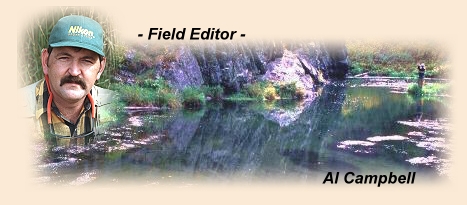|
I had a chance to use my snow blower over
the last week. In fact, I got to push it
around for a total of about ten hours in
the last seven days. The snow was so deep
I had to clear a patch of lawn for my basset
hound to use so he wouldn't get high-centered.
We had five-foot deep drifts in places, and
after settling, some are still about four feet
deep. Maybe we'll have water in our streams
next year.
That doesn't mean I have a lot of free time to
play though. Life on this side of the screen has
been busy. In the last month, two of my uncles
died, and one ended up in the hospital in serious
condition. A former son-in-law tried to kidnap my
grandson while he was playing on the school grounds,
even though there is a protection order against the
former son-in-law for abusing his own son. It's
hard to think of anything positive to write at times
with all that going on.
I do, however, have something I think is positive to
write about. In fact, I think it will eventually be
something that could have a big impact on fly-fishing,
so I want to tell you about it. That something is a
new technology in fly rod design that I think will
impact how many rods are built in the future.
When Redington was bought by Sage last summer, Jim
Murphy (Redington's former CEO) didn't go with the
company. Instead, he formed a new fly rod company
called Albright. That move allowed some new ideas
and new technologies to sprout. The newest technology
is available in their EXS fly rods that vary between
$325 and $395 for three-piece rods from 3wt to 12wt.
I won't try to paraphrase the information I received
but rather, I'll just include it here in the exact
words it was written.
EXS Fly rods
Design Goal:
To construct a high performance fly rod with the
sensitivity, lightness-in-hand and a swing weight
that rivals the best rods available today. Also,
to introduce a new level of durability that will
address the continuing breakage rate problems and
poor impact resistance of this high performance
class of fly rods.
Materials opportunity:
Using new materials for scrim available from the
aircraft industry for bullet proofing fuselages we
sourced a non-woven scrim with appropriate aerial
weights (grams of scrim per square meter) for use
as the final material wrap around a high modulus
graphite core. We tested Kevlar, s-glass, carbon
and fused silicate for specific application to our
design criteria and found the fused silicate to
satisfy the Design Control Criteria.
Tapers and actions:
Fused silicate is the most appropriate material as
it can be easily tacked to prepreg, (editor's
note - the stuff wrapped around a mandrel to create
a rod blank) and the light aerial weight non-woven
configuration does not crack or buckle given the
narrow diameters of fine tapers necessary for
sensitivity and tip casting. The actions of light
rods until now tend to require line overload and
then hinge at high-speed distance casting. The fused
silicate and high modulus core construction allowed
us to build a fast, durable and light rod that will
oad properly at all distances.
Durability:
Impact resistance tests address the tendency of carbon
to fail at light impact. Non-woven fused silicate
scrim is a high density ceramic designed by the
military to address the specific failure of carbon
in this instance. By a factor of four the impact
resistance of the rod is improved by the external
scrim application.
Dead lift tests and term stress in both destructive
and non-destructive testing show a 15-20% improvement
in strength. This is at least partially attributable
to the thicker walls we can build with a much more
efficient weight per strength value.
Plans for the future:
We are currently developing four piece EXS rods
to be available to the market in early spring.
We are also working on conventional surf, offshore
and spin and casting rods using this new material
configuration. These models will be introduced
in Fall '04."
What that means is they found a way to make fly
rods more durable, and especially so when it
concerns impact. That should thrill the guys who
like to cast bead-head nymphs and worry about
shattering their rod tips. It also means the rod
is less likely to suffer from an accidental drop
on the rocks. It doesn't mean the new rods will
be bulletproof though. They'll just handle
accidents better than the current high-end
offerings.
Right now I have several of those new rods in my
basement waiting for weather that will allow me
to play with them. I can definitely see the
difference in the way they look, and a shake test
tells me they should have power, but the real test
will be casting them. I plan to do just that as
soon as possible. I'll give you a complete
run-down on my findings as soon as I get to play
with them. Will the rest of the rod building world
follow their lead? I don't know. However, it's
refreshing to see someone willing to try new things
to make a better rod and keep the price within a
more reasonable range.
You can see photos of these new rods on the Albright Sponsor
Page, HERE.
I'll tell you all about it when I get to test them.
For now though, the snow blower and the
four-wheel-drive feature on my Blazer are getting
a real workout.
~ AC
|



